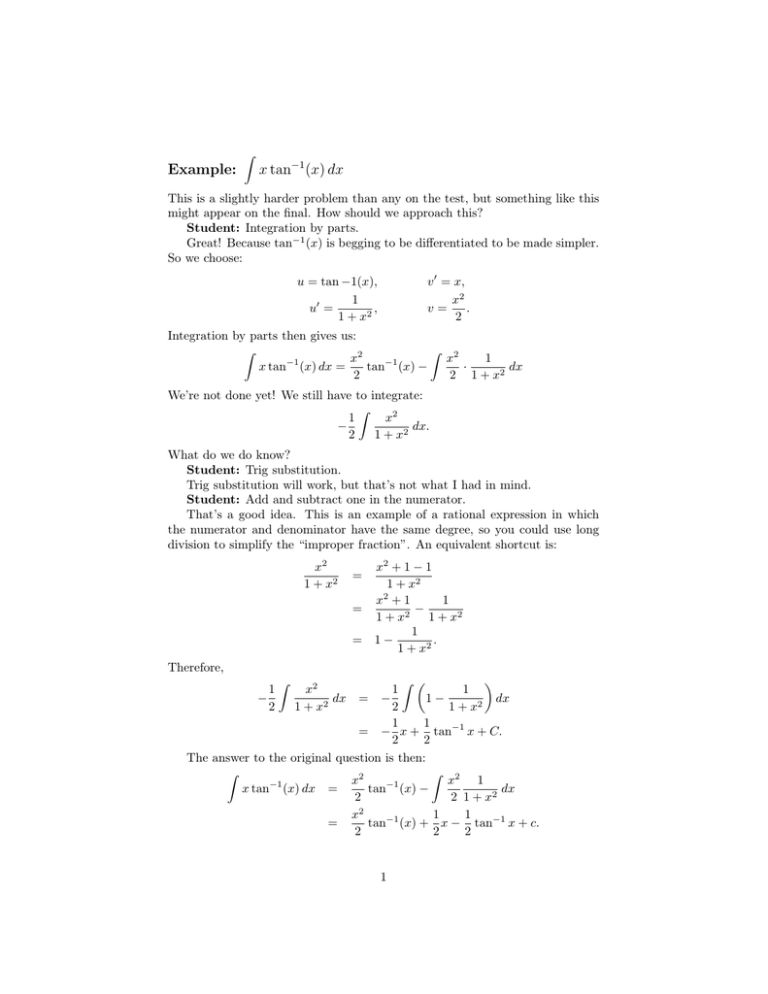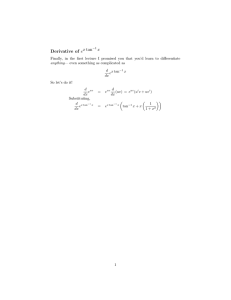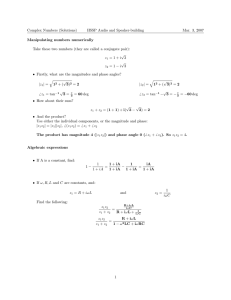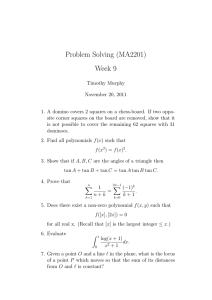Example: x tan (x) dx
advertisement

Example: � x tan−1 (x) dx This is a slightly harder problem than any on the test, but something like this might appear on the final. How should we approach this? Student: Integration by parts. Great! Because tan−1 (x) is begging to be differentiated to be made simpler. So we choose: v � = x, x2 v= . 2 u = tan −1(x), 1 u� = , 1 + x2 Integration by parts then gives us: � � 2 x2 x 1 x tan−1 (x) dx = tan−1 (x) − · dx 2 2 1 + x2 We’re not done yet! We still have to integrate: � 1 x2 − dx. 1 + x2 2 What do we do know? Student: Trig substitution. Trig substitution will work, but that’s not what I had in mind. Student: Add and subtract one in the numerator. That’s a good idea. This is an example of a rational expression in which the numerator and denominator have the same degree, so you could use long division to simplify the “improper fraction”. An equivalent shortcut is: x2 1 + x2 = = = x2 + 1 − 1 1 + x2 2 x +1 1 − 1 + x2 1 + x2 1 1− . 1 + x2 Therefore, x2 dx 1 + x2 � � � 1 1 1− dx 1 + x2 2 1 1 = − x + tan−1 x + C. 2 2 The answer to the original question is then: � � 2 x2 x 1 x tan−1 (x) dx = tan−1 (x) − dx 2 2 1 + x2 x2 1 1 = tan−1 (x) + x − tan−1 x + c. 2 2 2 − 1 2 � = − 1 MIT OpenCourseWare http://ocw.mit.edu 18.01SC Single Variable Calculus�� Fall 2010 �� For information about citing these materials or our Terms of Use, visit: http://ocw.mit.edu/terms.




